Turkey
Looking for justice in times of perpetual conflict: Saturday Mothers and their beloved ones
Enforced disappearances, in a way, represent different problems that are at the core of democratization efforts in Turkey. On one hand, the struggle of the relatives of the disappeared has created an alternative space of memory that is not only widely known among different segments of the society but also partially recognized by the official authorities. On the other hand, the legal cases related to enforced disappearances, albeit without any concrete results so far, have represented one of the crucial milestones of the legal struggle against impunity. Paradoxically, even the failures of the struggle concerning the recognition of the victims and the breaking of the impunity chain protecting the perpetrators, tell a lot about politics, memory and dealing with the past. Thus, enforced disappearances, which is a state crime committed at the margins of the political space, may represent the most accurate site for observing the paradoxes and zigzags of the democratization process and struggle for human rights in Turkey.
Background
Enforced disappearance is not a recent phenomenon in Turkey; on the contrary, its origins may be traced back to the Armenian Genocide in the early 20th century. On April 24, 1915, which is also recognized as the commencement of the Armenian Genocide, 262 Armenian intellectuals, politicians and notables living in the then capital of the Ottoman Empire, Istanbul, were taken into custody; the fate of most of them still remains unknown. After the establishment of the Republic of Turkey, during the 1930s and afterward, the state continued to use the strategy of enforced disappearance selectively and if deemed necessary. One of the most prominent writers of Turkey, for instance, Sabahattin Ali, who recently became extremely well-known with the sudden boost of his modern classic Madonna in a Fur Coat, was also executed while passing the Bulgarian border, allegedly by a man who was helping him leave the country.
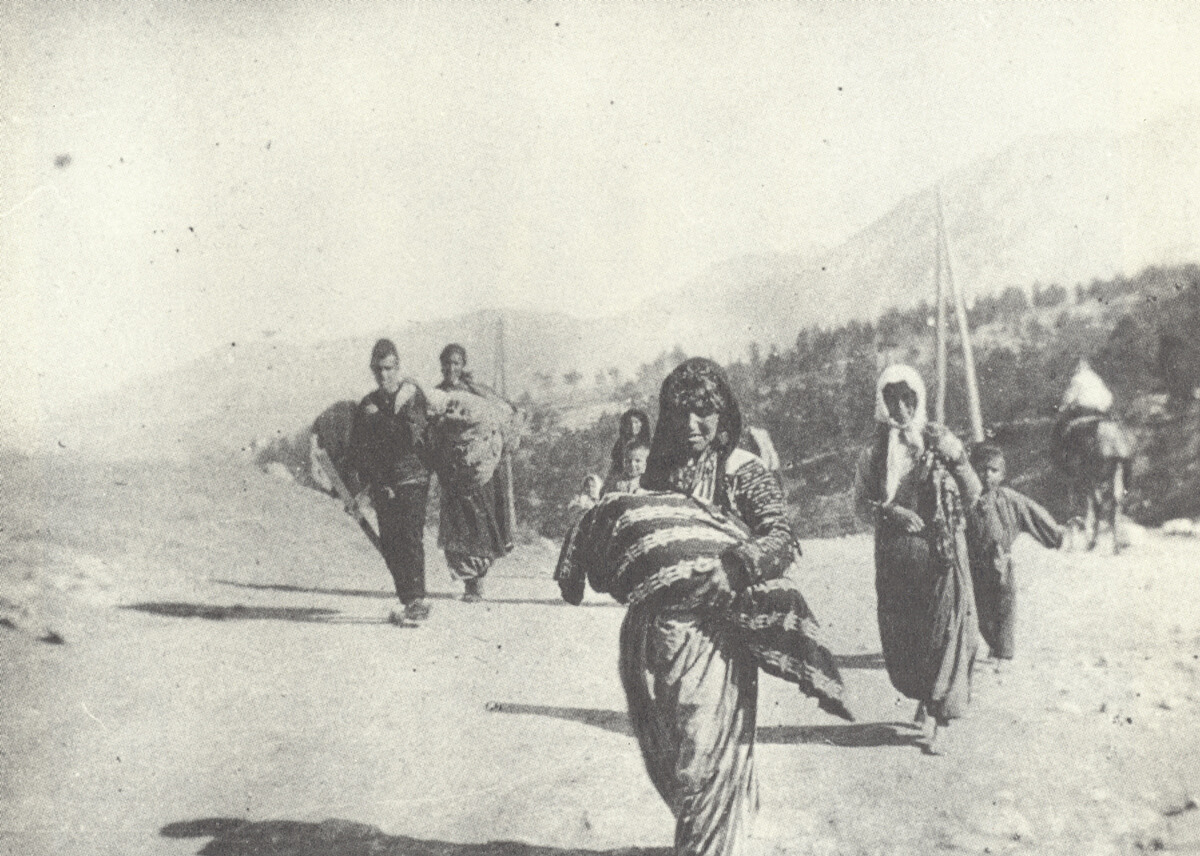
Other singular cases may also be cited apart from Sabahattin Ali, however, the systematic implementation of enforced disappearances begins with the September 12, 1980 coup d’état, which had a tremendous effect on the political climate of Turkey. Some significant events and figures may help to understand the decisive impact of this military intervention: Following the coup, the Grand National Assembly of Turkey was closed down; the constitution was abolished; political parties, trade unions and several other institutions were closed down and their properties were confiscated; 650,000 people were detained; 230,000 people were tried; 517 people were sentenced to the death penalty, 50 of these sentences were executed; 14,000 people were deprived of citizenship rights; 171 people were documented to have been killed by torture, and a total of 299 people died in prisons.1 The broader political consequences of the coup were the consolidation of a permanent control over the society, the establishment of a monistic political structure based on Turkish nationalism, and an ultra-militarized political atmosphere. Also, for the first time, enforced disappearances started to be used in a more structured manner as an official state strategy; several dissidents of the junta regime including students, workers, journalists, trade unionists and militants of the radical/armed leftist movements were forcibly disappeared.

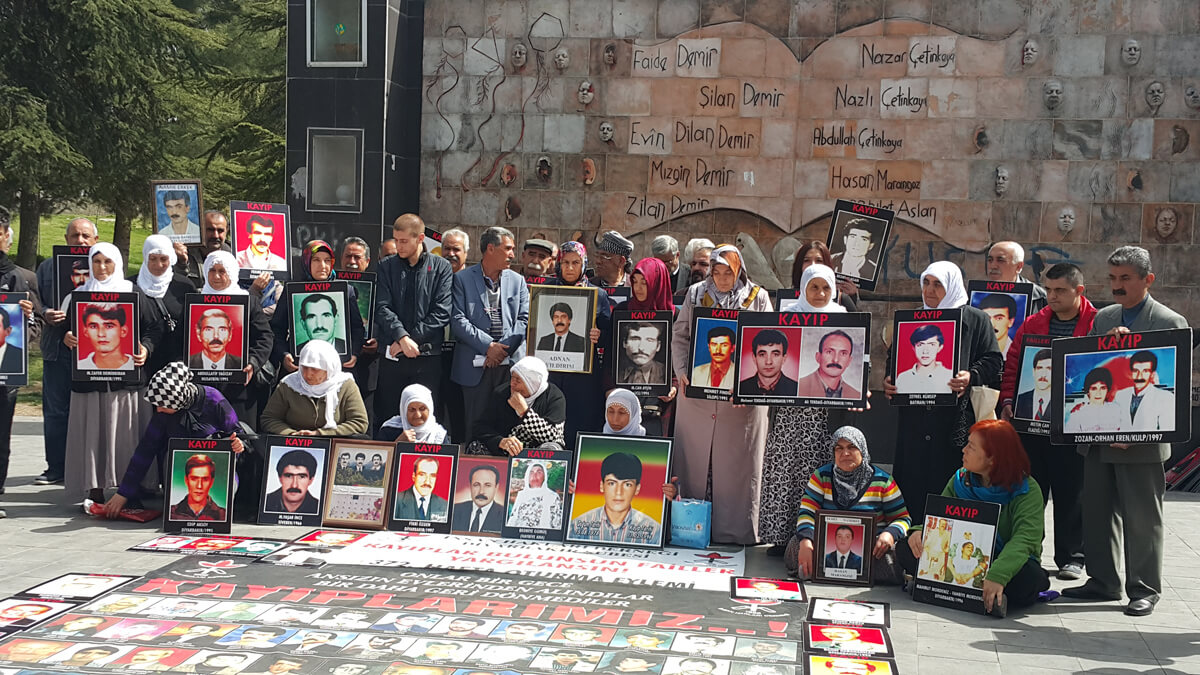
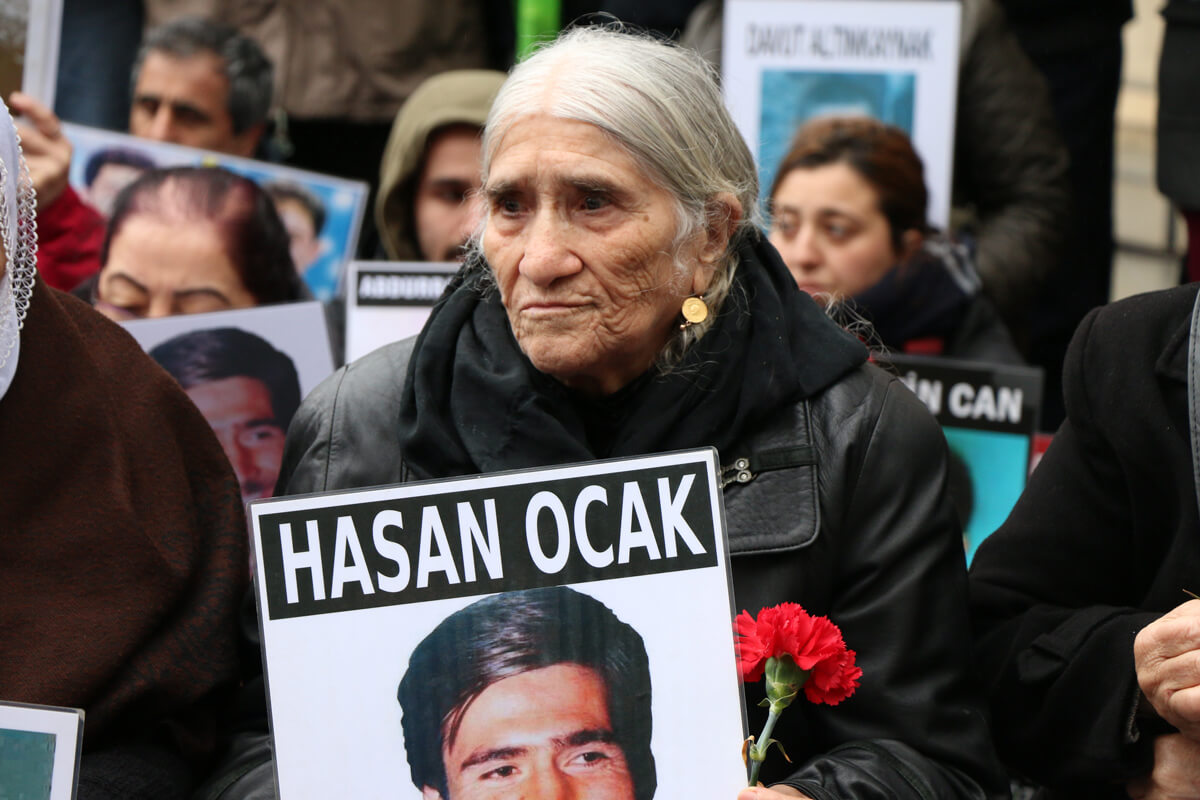
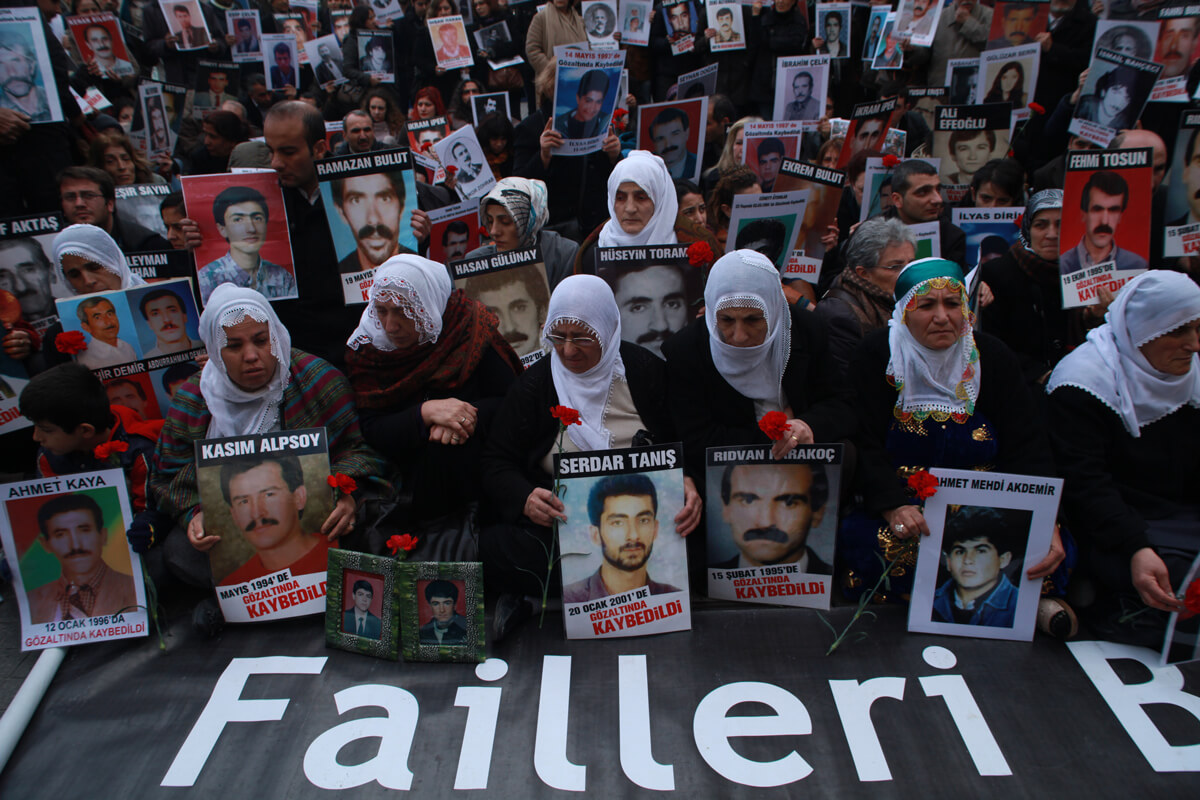
However, one of the most important outcomes of the 1980 coup, namely the Kurdish conflict, later on, became the main field where enforced disappearances were systematically and extensively implemented by the official forces and paramilitary groups. Commenced in 1984 and intensified during the 1990s, the armed conflict between the Turkish Armed Forces (TSK) and Partiya Karkerên Kurdistan (PKK) with its broader political outcomes created the need for a novel repertoire of state violence during the 1990s. These political outcomes were: a significant political mobilization around the Kurdish political movement; the popularization of the political demands of PKK among some segments of the Kurdish society; constantly increasing participation in the guerrilla forces as well as the establishment of political parties, newspapers, civil society organizations by the Kurdish movement. In 1993, the National Security Council declared a new security strategy entitled “Territorial Dominance and the Expulsion of the PKK from the Region” and more “brave” methods of counter-insurgency began to be implemented in the Kurdish region. There was a visible increase in the numbers and prevalence of the forced evacuation of villages and other settlements, extrajudicial and arbitrary executions, and enforced disappearances after this new strategy for territorial dominance was put in practice as a response to the sovereignty crisis of the official state ideology.
Patterns of Crime
The forcibly disappeared fall under three main categories in Turkey: those who were disappeared early on comprise of students, workers, trade unionists, most of whom were militants of the radical/armed leftist organizations and were disappeared during the 1980s and early 1990s; the group of local Kurdish spokespersons comprises of journalists, politicians, activists, lawyers, and human rights defenders, who represented the mobilization around the Kurdish political movement; and the third group comprises of every citizen living in the Kurdish region who was accused of logistically supporting the PKK or being a member of the militia organization. It should be noted that the third category is the most crowded one. The exact number of the forcibly disappeared is yet unknown; however, according to the estimates of Hakikat Adalet Hafıza Merkezi (Truth Justice Memory Center) based on an evaluation of the data compiled from a number of human rights organizations, a total of 1,353 individuals have been forcibly disappeared, mostly after 1993 and predominantly in the Kurdish region, the southeastern part of Turkey.
The perpetrators of the crime are mostly the Gendarmerie Intelligence and Counterterrorism Units (JITEM) positioned throughout the Kurdish region as counter-insurgency teams that collect information and organize operations; they are comprised of army officers, police members, village guards (paramilitary groups armed by the state and ascribed a duty to partake in the struggle against the PKK) and repentants (former members of the PKK who fight alongside the paramilitary forces after acquiring official legal protection by providing information on the inner structure, relations and logistical connections of the PKK). These groups, for the most part, took persons into custody in a formal manner, in front of eyewitnesses (family members, neighbors, colleagues, or friends) and from their homes, workplaces, bazaars or other such public places where there were several other individuals who witnessed the event.
Another important component of the crime is that different individuals, who claim to be state officials or closely related/in good relations with JITEM teams or other official bodies, have asked for money from the families of the disappeared. Typically, unknown individuals contact the families, mostly through a phone call, and tell them that they have information concerning the whereabouts of the forcibly disappeared which they would share in exchange for money. Again, typically, most of the families have strained themselves and did everything they could to gather this sum of money and give it to the unknown individual. However, unfortunately, they have almost never found the remains of their loved ones even after this tragic trade.
Last but not least, the continued absence of the bodies/remains of the disappeared is striking. Based on the data of Hafıza Merkezi, out of the 486 people whose enforced disappearance have been verified by the same organization, the bodies of 277 of them are still missing as of July 2017.2 Except for a very small minority, the bodies/remains of the disappeared that have been found were not properly delivered to the families but mostly discovered by the efforts of the relatives themselves. These bodies, bearing severe traces of torture and ill-treatment, were found mostly by the roadsides, in unused lands outside the villages, wastelands near the military zones, water wells, cesspools, and construction sites.3
The 1990s, in other words, meant a period of total impunity.
Legal Situation
None of the official perpetrators involved in enforced disappearances were tried and convicted during the 1990s or in the early 2000s. Relatives of the disappeared wrote petitions systematically and received several types of ineffectual responses: most prosecutors did not accept the petitions on various pretexts; among the ones who did accept the submission of petitions almost none started an investigation; some of them underlined their own weakness over the military officers, while yet others threatened the relative of the disappeared.4 The 1990s, in other words, meant a period of total impunity.
The situation at the European Court of Human Rights (ECtHR) was completely different. Although a very small number of the families of the forcibly disappeared were able to take their complaints to the ECtHR, in its inquiry, the ECtHR determined that the official authorities were unwilling to investigate enforced disappearances and found that there was no access to legal remedies in Turkey.5 The most consequential cases brought before the ECtHR were Kurt v. Turkey, Cakici v. Turkey, Timurtaş v. Turkey, Orhan v. Turkey and İpek v. Turkey. It may be argued that the reasoning of ECtHR concerning enforced disappearances was shaped and transformed by the cases of Turkey (and consequently of Chechnya/Russian Federation) and culminated in an important case law on the distinctive features of enforced disappearances. Elements of this case law includes issues such as pieces of evidence of involvement of the state actors; establishing the death of a victim whose body has not been found; the interpretation of the time that has elapsed since the victim’s abduction/detention; the context in which the disappearance has occurred; the burden of proof and the determination of a prima facie violation of Article 2, Right to Life. Especially the Timurtaş case is crucial, for in this case, the ECtHR argued that the requisite standard of proof beyond reasonable doubt might be satisfied by “the coexistence of sufficiently strong, clear and concordant inferences or of similar unrebutted presumptions of fact,” if these are based on concrete elements. This decision became a milestone not only for the enforced disappearance cases of Turkey but also for the cases of Chechnya/Russian Federation as well, for it showed the court’s manner of reasoning for determining state responsibility. According to the studies of Hafıza Merkezi, the Republic of Turkey was found responsible in 87 percent of the enforced disappearance cases before the ECtHR.
In 2007, after the commencement of two high-profile cases, namely the Ergenekon and Balyoz investigations in which several important military officers were tried in domestic courts on charges of organizing a coup d’état, the state crimes of the 1990s became an issue of legal and political debate in Turkey. Since the army officers on trial were also involved in the crimes committed in the Kurdish region during the 1990s, separate criminal cases were launched in relation to the criminal activities of military actors and paramilitary groups. These army officers were the most senior members of the Turkish military ever to stand trial specifically for gross violations of human rights committed during the thirty years of the Kurdish conflict. In a total of 10 crucial cases,6 army officers, village guards, groups of repentants and members of police forces have been tried for their involvement and complicity in the crime of enforced disappearances. Initially, the hearings were held with the accelerated procedure, all the defendants were incarcerated due to the seriousness of the crimes and the initial indictments asked for severe punishments for the defendants. Moreover, an open negotiation process was commenced in 2013 between the state and Abdullah Öcalan, the incarcerated leader of the PKK, which also strengthened the optimistic expectations from these court cases.
However, the optimistic expectations were not realized. With the failure of the peace process and the resurgence of the armed conflict, the trajectory of the cases altered radically. The cases were transferred to remote towns due to “security reasons”; in most of the cases the panel of judges and prosecutors were changed several times; the defendants were released one by one considering their extended period of incarceration. As of the date of this publication, five of these cases have ended with the acquittal of all the defendants, while the defendants of the remaining five cases are waiting for their acquittal.
Memorialization Efforts
The most important memorialization effort concerning the forcibly disappeared is the initiative of Saturday Mothers/Persons, which held its first sit-in on May 27, 1995, at Galatasaray Square, one of the most crowded sites in the Beyoğlu district of Istanbul. This first sit-in was organized in the aftermath of a series of events including the discovery of the tortured body of the forcibly disappeared Hasan Ocak7 in a common grave. During their search for Hasan Ocak, his relatives and human rights activists, mainly from the Human Rights Association (IHD), found—by mere coincidence—some documents in the registers of the Forensic Medicine Institute referring to yet another forcibly disappeared, Rıdvan Karakoç.8 Finally, Ayşenur Şimşek,9 a pharmacist, activist and one of the founders of the newly established health workers union Sağlık-Sen (Union of Health and Social Workers), who was taken into police custody, was found dead on January 24, 1995. Deeply affected by these events and inspired by Madres de Plaza de Mayo in Argentina, and with the initiative of Hasan Ocak’s family, the human rights defenders and families of the disappeared began to gather at the Galatasaray Square every Saturday at 12 pm and sit silently with the photographs of their loved ones in their hands, demanding to know what happened to the disappeared and to have those responsible tried in the courts of law. The silent vigil was held every Saturday, at the same hour, at the same place, occasionally with red carnations in their hands, but without any slogans, solely bearing the photographs, stories of the disappeared; at the end of each sit-in, a press statement was read emphasizing their demand for truth and for justice to be done for the crime of enforced disappearance that was carried out systematically for years. Despite the police violence against the sit-ins and the constant oppression of its participants in the form of detentions, torture and beatings, this silent demonstration continued for 200 weeks. The sit-ins had a, broader effect as well; for instance, Sezen Aksu, one of the most acclaimed and popular singers of Turkey, wrote a song for the Saturday Mothers named “The Ballad of Saturday,” and a recording of this song was distributed as a supplement of the popular weekly magazine Aktüel.10
Despite this powerful effect, however, the sit-ins were discontinued on March 13, 1999, by the families of the disappeared due to the constant ill-treatment and severe oppression they were subjected to. Maside Ocak, sister of Hasan Ocak, said that the families were not terminating but only suspending their sit-ins, and declared: “For us, every place is another Galatasaray Square; we will continue the search for our disappeared relatives.”11 After the indictment of the Ergenekon case was drafted, the Saturday Mothers/Persons sit-ins recommenced on January 31, 2009. This time, the main demand of the sit-ins was the expansion of the scope of the Ergenekon case so as to include also the crime of enforced disappearance, because the persons responsible for enforced disappearances were now on trial as part of the Ergenekon investigation. The new round of sit-ins was, therefore, initiated by a concrete demand for accountability and justice. Moreover, the sit-ins were now taking place also in Kurdish cities such as Diyarbakır, Batman, Yüksekova and Cizre. It was during this period that the then prime minister of Turkey, Recep Tayyip Erdoğan held a meeting with the relatives of the disappeared and the representatives of the Saturday Mothers/Persons.12 With the resurgence of the armed conflict, however, the sit-ins in the Kurdish cities were, for the most part, suspended; presently, they continue to be held only in Istanbul and Diyarbakır.
Individual Story
TAHİR ELÇİ
“We do not like you and we ask you to withdraw from the proceedings”
Tahir Elçi was the lawyer of almost all the families of the disappeared and he was the jurist who made a remarkable impact on the criminal cases against the perpetrators of enforced disappearances. He was from Cizre; his work and ceaseless struggle have inspired the work of all human rights defenders, and foremost the lawyers. Among the cases he brought before the ECtHR, the most significant ones were: Ahmet Özkan and Others v. Turkey, Yavuz and Others v. Turkey, Cülaz and Others v. Turkey, Yakışan and Others v. Turkey, Benzer and Others v. Turkey, Tanış and Others v. Turkey, Yumak and Sadak and Others v. Turkey.13 As the head of the Diyarbakır Bar Association, Tahir Elçi attended a very popular television program “Tarafsız Bölge” aired on CNN Turk on October 15, 2015. In this TV program, he stated that he did not define the PKK as a terrorist organization. After this statement, he was targeted by several TV programs and newspapers of the mainstream media, and his statement also resulted in a criminal case against him. On November 28, 2015, he was killed in broad daylight at the foot of a historic mosque (Dört Ayaklı Minare – Four-Pillared Minaret) where he was reading a press statement protesting the ongoing armed conflict in the urban spaces of Diyarbakır and the devastation it brought to the historical heritage of the old city of Sur and in particular to the Four-Pillared Minaret. The perpetrators are still unknown; the impunity that he fought against his entire life is now protecting his assassins.
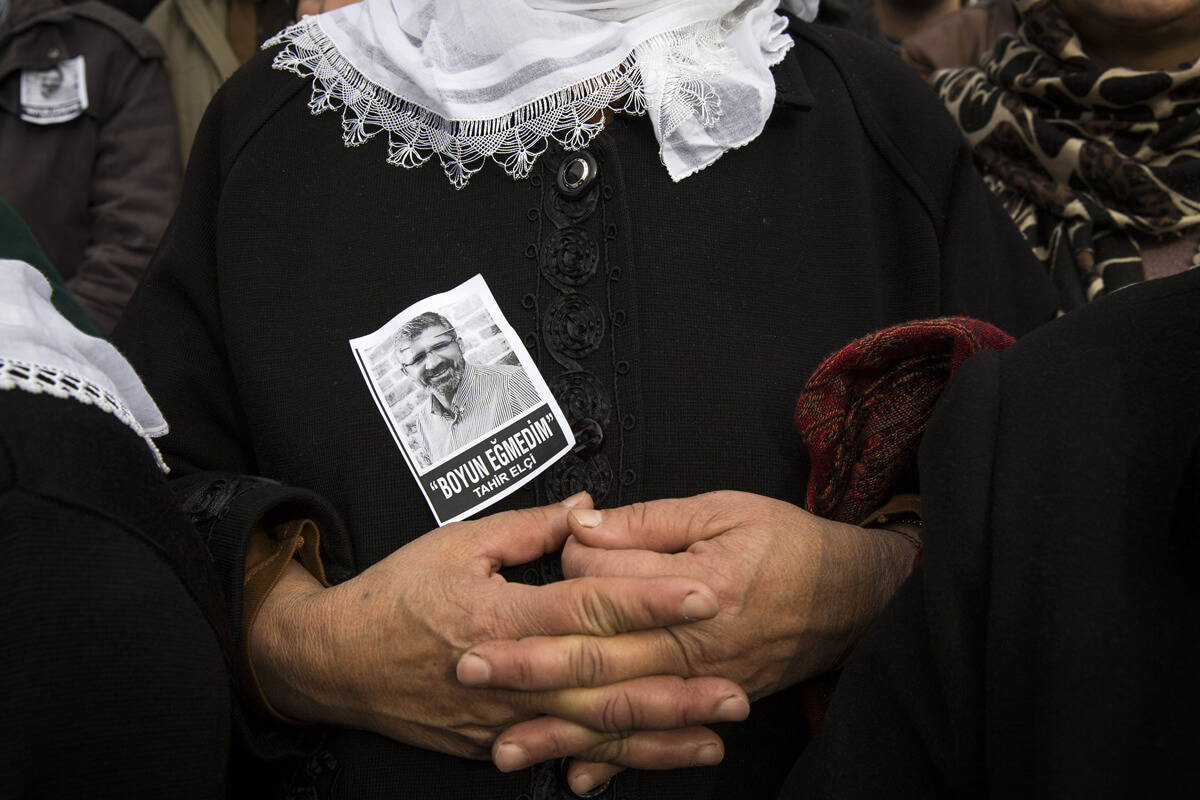
With the resurgence of the armed conflict, the courts had begun to end the prosecutions of enforced disappearance cases with decisions of acquittal for the perpetrators. Therefore, Tahir Elçi was relatively restless during the hearing of the Lice Case—the last one right before his assassination—because, despite his ceaseless efforts and optimism stemming from his meticulous legal work, the court had refused his demand to have the defendants face the court. Elçi was known for his kindness and calm attitude during the trials, however, after hearing that his demand was not met, perhaps for the first time in his life, he told the presiding judge, “we do not like you and we ask you to withdraw from the proceedings”. “…That judge was not present in the [next] hearing following his death. During that hearing, the courtroom was jam-packed with all the victims carrying photos of Tahir Elçi. His photo was placed on the seat where he normally sat, and the statement he made in that former hearing was re-read by the lawyers of the victims. Later the court board gave a brief recess to assess the request to bring the defendant before the court. Just as the judges returned to announce their judgment, a dove entered the courtroom through one of the open windows. Amazed at the sight, the victims almost believed that it was Tahir Elçi coming to listen to the decision. While the panel of judges announced their decision to indeed bring the defendant before the court, the dove tweeted. Then, flapping its wings, it flew out the window. Everyone thought that the tweets, surely, must have signified the approval of he who never missed a hearing, that of Tahir Elçi.” 14

